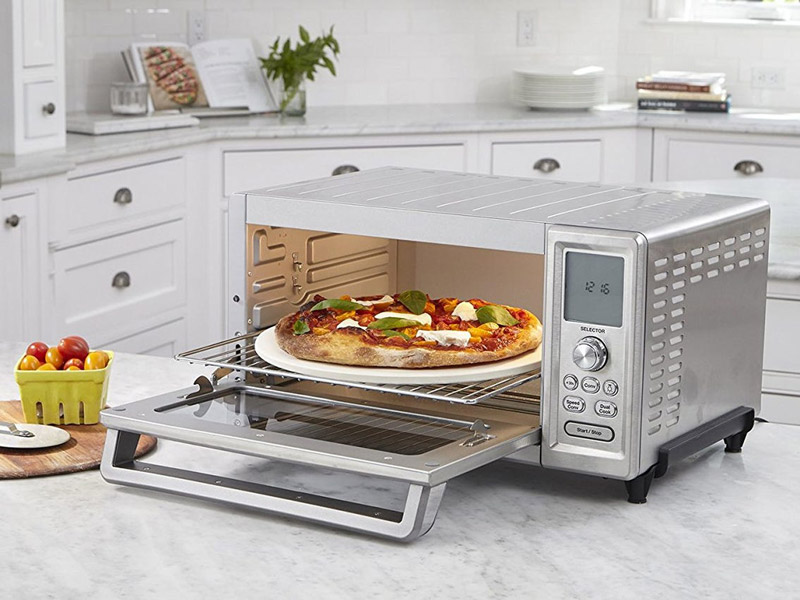Pros and Cons of Having Ovens at Home

Depending on who you ask, or what you’re looking for, you’ll find over 15 types of ovens in the market today. Yes, there are ovens categorized by the heat source, placement/installation, size, and features. All ovens have their strengths and weaknesses, so choose based on what you think is best for your kitchen and cooking requirements.
MAIN OVEN TYPES
For many people, there are just two types of ovens to choose from: either a conventional or convection oven. The names can be pretty confusing, but both these ovens refer to how heat is distributed inside.
- Conventional oven – Its heat source comes from the bottom like your ordinary stove. This is one of the oldest types of ovens. Any enclosed box with a heat source at the bottom can be considered a conventional oven.
-
- PROS: Plenty of options from different brands and wide range of prices
-
- CONS: Uneven for roasting and not energy efficient
- Convection oven – Also called thermal ovens, these ovens get heat from all directions thanks to the built-in electric fan that distributes the heat more evenly.
-
- PROS: Can be used for baking and roasting with even results. Energy-efficient and money-saving compared to other types of ovens.
-
- CONS: More expensive than conventional ovens
OTHER OVENS BY HEAT SOURCE
Technically, the first two ovens above should also be under this category.
- Gas oven – Used traditionally for bakeries and commercial kitchens, gas ovens use a high BTU gas flame that produces moist heat and cooks juicier food.
-
- PROS: Easy to maintain and able to control heat better.
-
- CONS: More expensive and harder to clean than electric ovens.
- Electric oven – As its name suggests, this type of oven uses electricity for heat. There are conventional and convection models of electric ovens available.
-
- PROS: Ideal for roasting and no gas required to operate, which means it is safer for condos and households with young kids.
-
- CONS: Older electric ovens are known to consume high electricity
- Traditional oven – The brick/stone ovens you see at your local pizza place? There’s a good chance that’s a traditional oven they’re using fueled by heat from wood.
-
- PROS: Perfect for breadmaking and commercial pizza place.
-
- CONS: Not the most aesthetically-pleasing oven of the bunch. Not practical to keep at home due to its large size.
- Steam oven – This kind of oven is designed with a water container and boiler that works together in creating steam, which then cooks your food.
-
- PROS: Less risk of dry meat or fish with this method of cooking. Evenly cooked food all the time. Cook with less oil and healthier meals.
-
- CONS: Can be expensive for residential use (commercial kitchens often have this oven to speed up cooking).
OVENS BY SIZE
If you’re looking for a space-saver oven, then going big may not be the right decision for you. Fortunately, you have 3 options when it comes to oven size.
- Single oven – Ideal for households with just a couple or small family.
-
- PROS: Can be a standalone oven or placed under a stove.
-
- CONS: Cannot cook big batches.
- Double or triple oven – If you watch cooking shows on TV, you’ve probably seen double ovens before – it looks like two wall ovens stacked on top of the other. They look super-classy and impressive. You can find double oven conduction or convection. Same as a triple oven (they look like double ovens, but the second one is actually divided into two for additional space).
-
- PROS: Cook double/triple amounts of food.
-
- CONS: Expensive.
OVENS BY PLACEMENT OR INSTALLATION
- Wall oven – Built-in ovens are gorgeous and functional. You have control over how your kitchen would look and where to place your oven.
-
- PROS: You have a lot of options for installation.
-
- CONS: The placement of your oven is permanent.
- Countertop oven – With this type of oven, you’re just going to place your oven on top of your kitchen countertop. Depending on your preference and kitchen space, a countertop oven could be the space-saving solution you’re searching for.
-
- PROS: Place under a cabinet, on your kitchen countertop, near your oven, and other options you prefer.
-
- CONS: Too many brands and models to choose from.
- Slide-in or drop-in ovens – These types of ovens are installed in specially-built cabinets or containers. This is a good alternative to a wall oven if wall-mounted ovens are not suitable for you.
-
- PROS: Cheaper than wall-mounted ovens.
-
- CONS: Harder to install than wall ovens.
You can even find ovens categorized by feature. For example:
- Self-cleaning ovens
- Smart or wifi-enabled ovens
- Rotisserie ovens (a model with features for roasting whole chickens)
- Microwave ovens
- Toaster ovens
- Ovens with delay feature
- … and so much more.
All ovens above can be a great addition to your kitchen, but since they have pros and cons, you’d have to weigh them based on your preference and current kitchen needs.